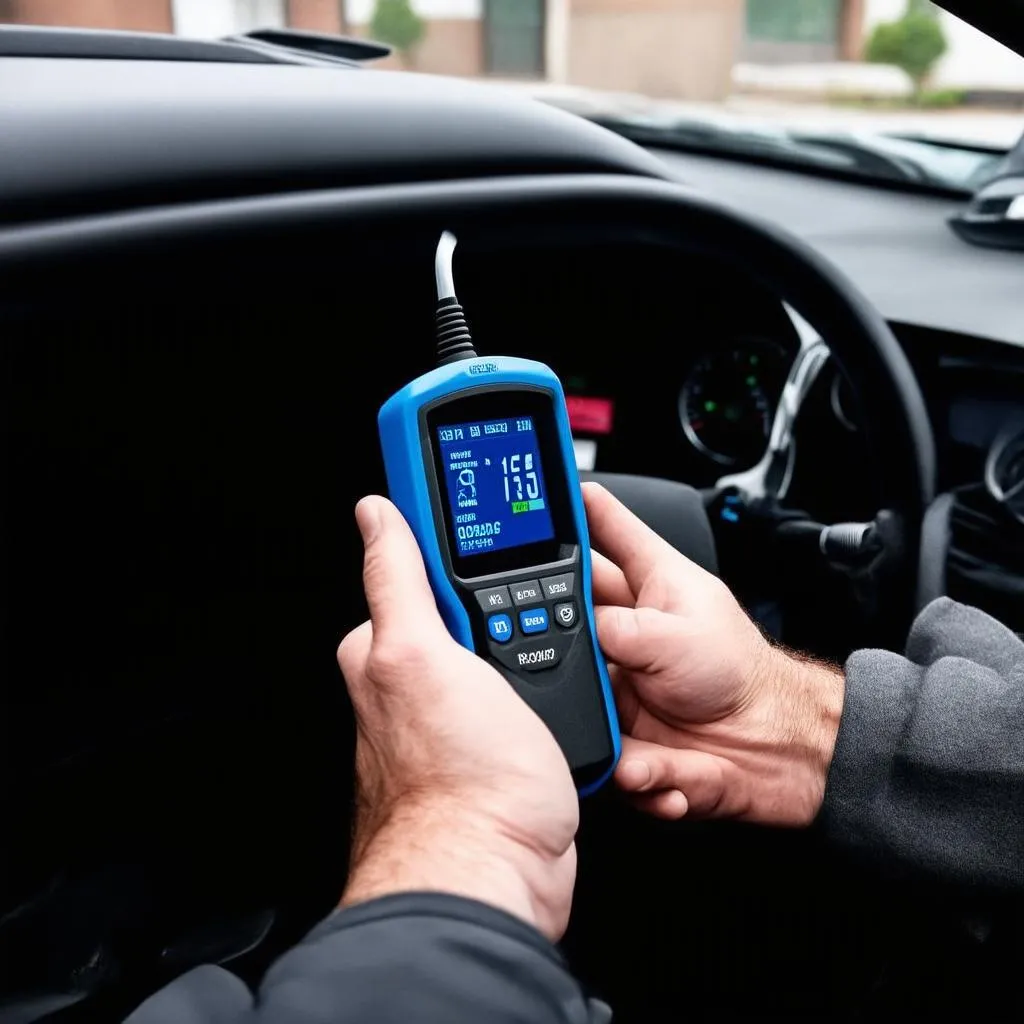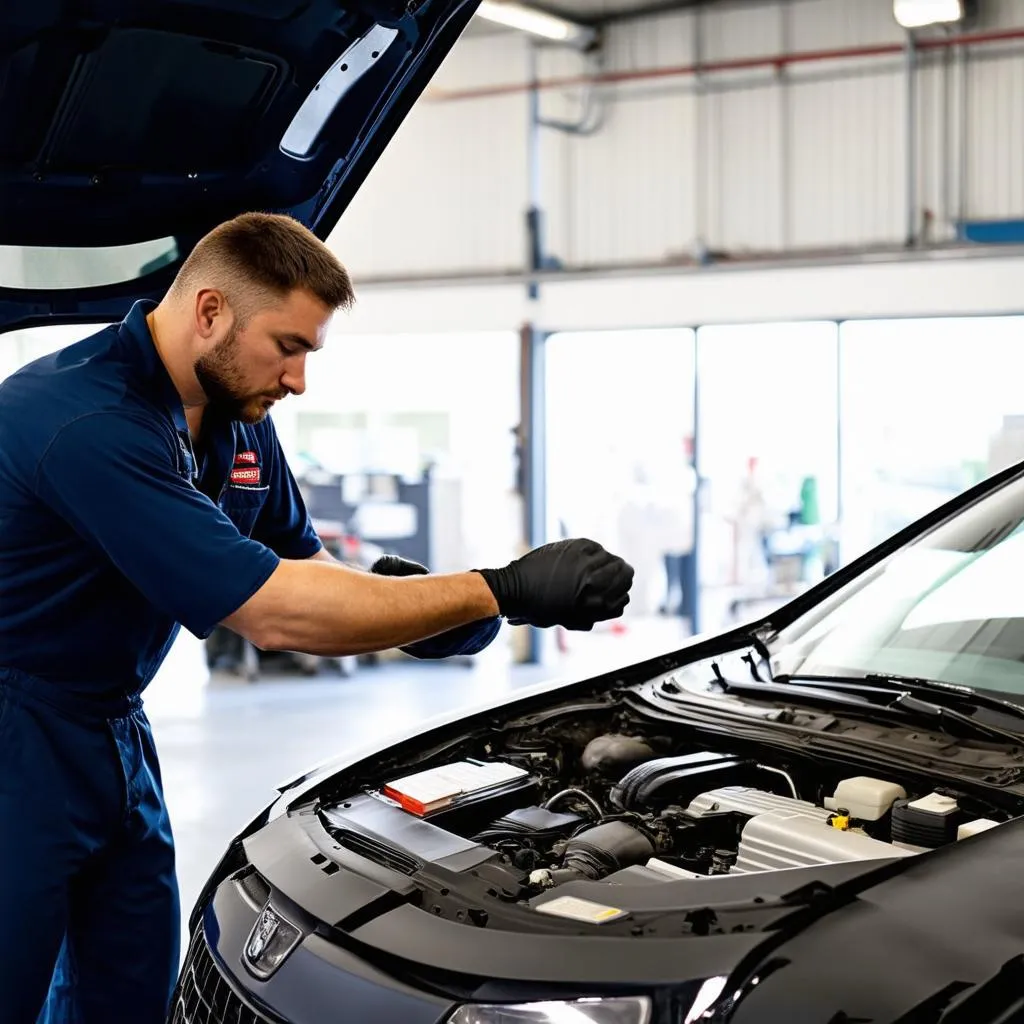Ever wondered what that flashing “Check Engine” light on your dashboard means? It’s a common sight for many car owners, and it often sends a wave of anxiety through us. What does it mean? Is it something serious? What do I do next?
We’ve all been there, and understanding the meaning behind your car’s “Check Engine” light, or more specifically, its “MIL status” (Malfunction Indicator Lamp) is crucial for ensuring your vehicle’s health and your peace of mind.
What is Obd Mil Status?
The OBD (On-Board Diagnostics) system is a complex network within your car that constantly monitors various vehicle parameters. It acts like a watchdog, detecting any malfunctions in your vehicle’s engine, emissions, and other critical systems. When an issue is detected, the OBD system illuminates the “Check Engine” light, or MIL, on your dashboard.
The MIL status essentially reflects the state of your OBD system, indicating whether it has detected any issues that need your attention.
Decoding the MIL Status: What Does It Mean?
Understanding the MIL status is like deciphering a secret code. It’s not just a simple “on” or “off” signal. Here are some key interpretations:
The “Check Engine” Light is On:
- Active Code: This means your OBD system has detected a current issue with your vehicle. It’s like a flashing red flag, telling you that something requires immediate attention.
- Pending Code: This indicates a potential problem that hasn’t yet triggered the light. Think of it as a yellow warning light, signifying a minor issue that may escalate if not addressed.
- Stored Code: These codes are stored in your vehicle’s memory, even if the “Check Engine” light isn’t currently on. They provide a history of past issues that may need to be addressed.
The “Check Engine” Light is Flashing:
- Critical Issue: A flashing “Check Engine” light is a serious warning, indicating a severe malfunction that could potentially damage your engine. This usually signifies a problem that requires immediate attention.
Troubleshooting Your MIL Status: Common Questions and Answers
How do I know what’s wrong with my car?
The most reliable way to understand the “Check Engine” light is to use an OBD2 scanner. This handy tool plugs into your car’s diagnostic port, allowing you to read the diagnostic codes stored in your OBD system. These codes provide valuable insights into the specific issues detected.
Tip: For accurate diagnostics, choose a reputable OBD2 scanner with comprehensive code reading capabilities.
Is it safe to drive with the “Check Engine” light on?
It depends. If the “Check Engine” light is on but not flashing, driving short distances may be okay. However, it’s always best to have the issue diagnosed and addressed as soon as possible. Driving with a flashing “Check Engine” light is highly discouraged, as it can lead to further damage.
Can I reset the “Check Engine” light myself?
You can certainly reset the light using an OBD2 scanner. However, simply resetting the light won’t resolve the underlying issue. The fault code will likely reappear, and you may face additional problems later.
What can I do if I have a pending code?
Pending codes are a warning sign. It’s best to address these issues before they escalate. You can use an OBD2 scanner to monitor the pending code and see if it becomes active.
Should I be concerned about stored codes?
Stored codes indicate past problems that may or may not be relevant anymore. If you’re experiencing a current issue, it’s a good idea to have your car diagnosed. However, if your “Check Engine” light isn’t currently on, stored codes might not require immediate attention.
What Happens if I Ignore the MIL Status?
Ignoring the “Check Engine” light is never a good idea. It’s like ignoring the warning signs in your body. It may seem like a minor inconvenience, but it can escalate into more serious and costly issues.
Potential Consequences:
- Increased Fuel Consumption: A faulty engine can lead to decreased fuel efficiency.
- Reduced Engine Performance: Your car might feel sluggish, have trouble accelerating, or lose power.
- Emissions Issues: Engine problems can result in increased emissions, leading to fines and environmental damage.
- Severe Engine Damage: Ignoring a serious engine issue could lead to catastrophic engine damage, resulting in expensive repairs or even a replacement engine.
Seeking Professional Help:
While some car owners feel comfortable tackling simple DIY repairs, dealing with the “Check Engine” light often requires professional help. A skilled mechanic can:
- Diagnose the Issue: Using specialized diagnostic tools and their expertise, they can accurately identify the root cause of the problem.
- Perform Repairs: They’ll have the knowledge and tools to make the necessary repairs to restore your car to its optimal performance.
- Reset the “Check Engine” Light: Once the repairs are complete, they’ll reset the light to ensure it’s properly functioning.
The Power of Intuition: Recognizing the Signs
While the “Check Engine” light is a clear signal, there are other subtle signs that your car might be experiencing issues. Pay attention to these warning signs:
- Strange noises: Unusual noises like rattling, knocking, or screeching could be signs of a problem.
- Reduced power: If your car feels sluggish or has difficulty accelerating, it might be a sign of a problem.
- Excessive smoke: Smoke from your exhaust can indicate an issue with your engine or emissions system.
- Unusual smells: Unusual smells like burning oil or gas could be signs of a problem.
Taking Care of Your Car: A Holistic Approach
Just like our bodies, our cars benefit from a holistic approach to wellness. Regularly scheduled maintenance and preventative care can go a long way in preventing major issues.
- Regular Oil Changes: Fresh oil keeps your engine running smoothly and reduces wear and tear.
- Air Filter Replacement: A clean air filter improves fuel efficiency and engine performance.
- Tire Pressure Checks: Maintaining proper tire pressure ensures optimal handling and fuel efficiency.
The Importance of Maintaining Your Vehicle
Think of your car as a loyal companion. It carries you through your daily life, transporting you to work, adventures, and precious moments. By taking care of your car, you’re not only ensuring its longevity but also protecting yourself and your loved ones.
Beyond the “Check Engine” Light: Other Resources
For a deeper dive into OBD2 diagnostics and maintenance, check out these helpful resources:
- Obd Mil Status: What It Means and How to Fix It
- Best OBD2 Scanners for Drive Cycle Monitors
- BatteryMinder OBD48: The Ultimate Battery Maintainer
Contact Us for Expert Assistance
Have questions about your car’s “Check Engine” light or need help with OBD2 diagnostics? Our team of expert mechanics is available 24/7 to provide you with personalized support. Contact us via Whatsapp: +84767531508 and we’ll be happy to assist you.
Final Thoughts:
The “Check Engine” light might seem intimidating, but it’s a helpful tool for keeping your car running smoothly. Understanding the MIL status, knowing when to seek professional help, and embracing regular maintenance are key to keeping your car in top shape. Remember, a well-maintained car is a happy car, and a happy car is a safe car.
 OBD Scanner for Your Car
OBD Scanner for Your Car
 Car Maintenance Checkup
Car Maintenance Checkup
Take care of your car, and it will take care of you.